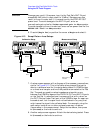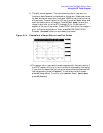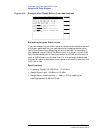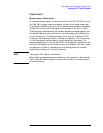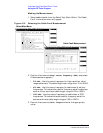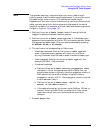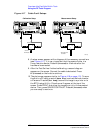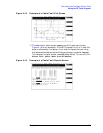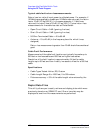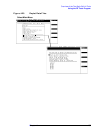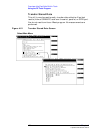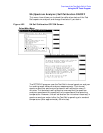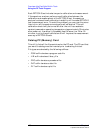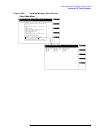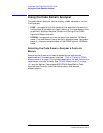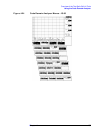
102 Chapter 4
C:\Spk\Ref\RefGuideRevE\Tools.fm
Overview of the Test Set’s Built-In Tools
Using the RF Tools Program
Typical cable fault return loss measurements
Return loss is a ratio of input power to reflected power. For example, if
100 Watts was applied to a cable and 10 Watts was returned, the return
loss is 10 dB (10 log(100/10)). In the same example, if 1 Watt was
returned, the return loss is 20 dB (10 log(100/1)). Typical return loss
measurements for the cable loss test are listed below:
• Open-Circuit Cable = 0 dB (ignoring line loss)
• Short-Circuit Cable = 0 dB (ignoring line loss)
• 50-Ohm Terminated Cable = 40 to 60 dB
• Antenna = 10 to 20 dB (in the frequency band for which it was
designed)
Return loss measurements greater than 20 dB should be considered
good.
Cable Fault Performance
Measurements of the cable fault location can typically be made up to
500 feet on low-loss cables and 300 feet on higher-loss cables.
Resolution of the fault location is approximately 0.4 feet for cable
lengths up to 50 feet and then linearly increases to 4 feet for a 500 foot
cable.
Specifications
• Cable Types Tested: Heliax, RG, Custom
• Cable Length Range: 0 to 1000 feet, 0 to 300 meters
• Distance accuracy: +/-5% of the cable length value entered by the
user
Replot Data Files
This utility allows you to easily retrieve and display plots which were
previously stored on an SRAM PC card. One or two plots may be
displayed at one time. No measurements are performed.



